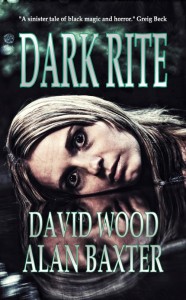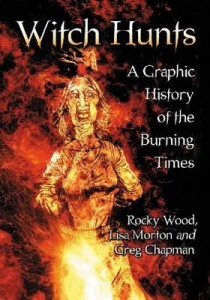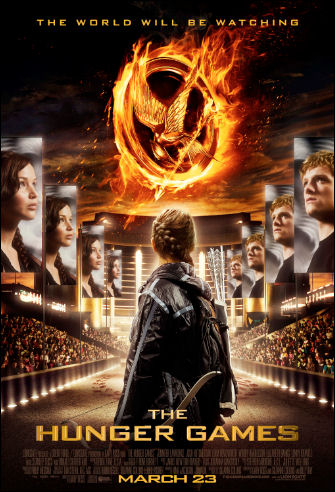DISCLAIMER: Thirteen O’Clock is managed by Alan Baxter, Felicity Dowker and Andrew McKiernan as Contributing Editors. While the Contributing Editors’ roles at Thirteen O’Clock are editorial and critique, all three are primarily writers. It is inevitable that their own work will form part of the Australian and international dark fiction publications which are Thirteen O’Clock’s focus, and as such it is also inevitable that their work will be reviewed at Thirteen O’Clock (to prohibit this would not only be unfortunate for Baxter, Dowker and McKiernan themselves, but for their hardworking editors and publishers).
Thirteen O’Clock will always have a third party contributor review the Contributing Editors’ work. Such reviews will be unedited (aside from standard corrections to typos and grammar), posted in full (be they negative or positive), and will always be accompanied by full disclosure of Baxter, Dowker and McKiernan’s place at Thirteen O’Clock. At no point will Baxter, Dowker or McKiernan review their own work.
 Dark Rite by Alan Baxter and David Wood
Dark Rite by Alan Baxter and David Wood
ISBN: 978-1940095004
Gryphonwood Press
Dark Rite is the inaugural collaboration between Thrillercast co-hosts Alan Baxter and David Wood. It sits on the cusp between a long novella and a short novel (just over 40,000 words for the pedantic) which means, whilst difficult for award judges to classify, it is able to deliver a novel’s worth of story and action in a package that’s easy to digest in an afternoon.
We open with our protagonist, Grant Shipman, heading to the tiny Appalachian hamlet of Wallen’s Gap to deal with the deceased estate of his father. Dumped remotely by his girlfriend of three years and no longer tied down to anyone or anything he seriously considers joining the seemingly friendly community permanently.
However, such thoughts are short-lived as he begins to unearth some disturbing facts about the town, its people and history. As a result, he quickly manages to inadvertently scare off Cassie, the only normal-seeming local, and have some disturbing run-ins with the resident banjo-wielding heavies.
With Cassie’s help, he begins to piece together an increasingly horrifying history of Wallen’s Gap and its occupants despite being stone-walled at every turn. Throw in a brutal public murder in broad daylight for good measure and Grant and Cassie realise they’re stuck firmly in the middle of a small town conspiracy of Hot Fuzzian proportions.
It becomes increasingly clear that there was more to the death of Grant’s father and the conspiracy enwrapping them is more than two people can handle. Dark cults, magic, brutal violence, witches and warlocks crash together and spiral towards a bloody and catastrophic conclusion with the unstopability of a demonic freight train.
Although I’ve not had the pleasure of reading David Wood’s works to date (something I plan to rectify shortly) I have read many of Alan Baxter’s works and whilst the dark cult was no shock, the main protagonist surprised me somewhat. Rather than being some heroic skull-cracking anti-hero, Grant Shipman is nothing more than an ordinary man. A young, fit, no-nonsense man for sure, but still with all the familiar problems and frailties of anyone else in the world and therefore easy to relate to.
Whilst nothing else particularly caught me off guard as the story played out, it was nonetheless a rollercoaster ride that kept me turning the pages until I was almost late for work. This story ticks all the boxes of a rollicking action / cult mystery, including the obligatory hook at the end, and would make a fantastic movie should that option ever arise. Wood and Baxter have managed to construct an engaging, punchy story that is dark enough to sate the bloody-minded but not too dark to keep the rest of us up at night, and for less than the price of the coffee, this is definitely worth the investment of an afternoon.
Damien Smith has heard that to be a great writer, one must read a lot and write a lot. While the former is covered off in spades, he reserves the latter for when he can actually imagine something stranger than his young family and the world around them can throw at him. If you’d met his family, the frequency of his writing may surprise you and give you some insight into his mind. Occasionally his stories even get published.
.

 Witch Hunts – A Graphic History of the Burning Times
Witch Hunts – A Graphic History of the Burning Times

 The Hunger Games is based on the first of a trilogy of young adult novels written by Suzanne Collins and has some very devoted fans of all ages. As one would expect, opinions vary about whether the movie has done justice to the written work. It seems most fans of the books are pleased with the film, however some feel necessary detail was lost. Other readers felt those same details made the written work drag so the story was in fact told more effectively in the film. I have not read the novels so can only comment on my experience of the film and the story told in this context.
The Hunger Games is based on the first of a trilogy of young adult novels written by Suzanne Collins and has some very devoted fans of all ages. As one would expect, opinions vary about whether the movie has done justice to the written work. It seems most fans of the books are pleased with the film, however some feel necessary detail was lost. Other readers felt those same details made the written work drag so the story was in fact told more effectively in the film. I have not read the novels so can only comment on my experience of the film and the story told in this context.